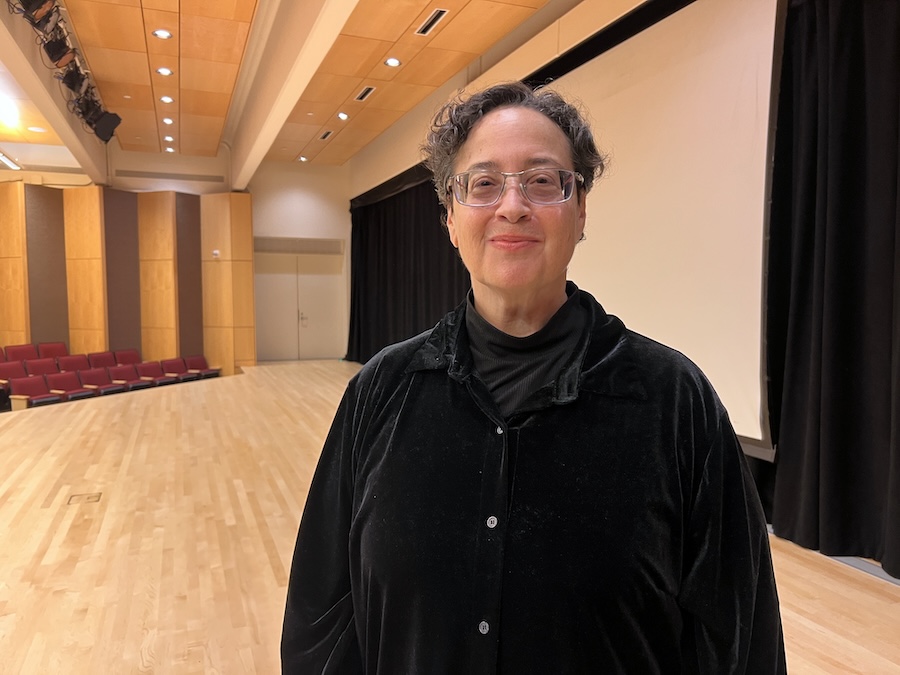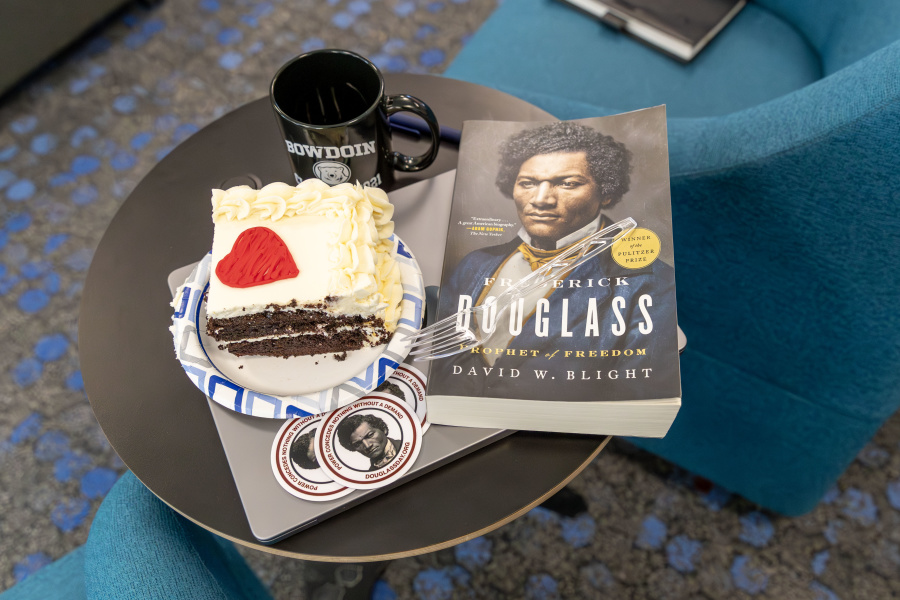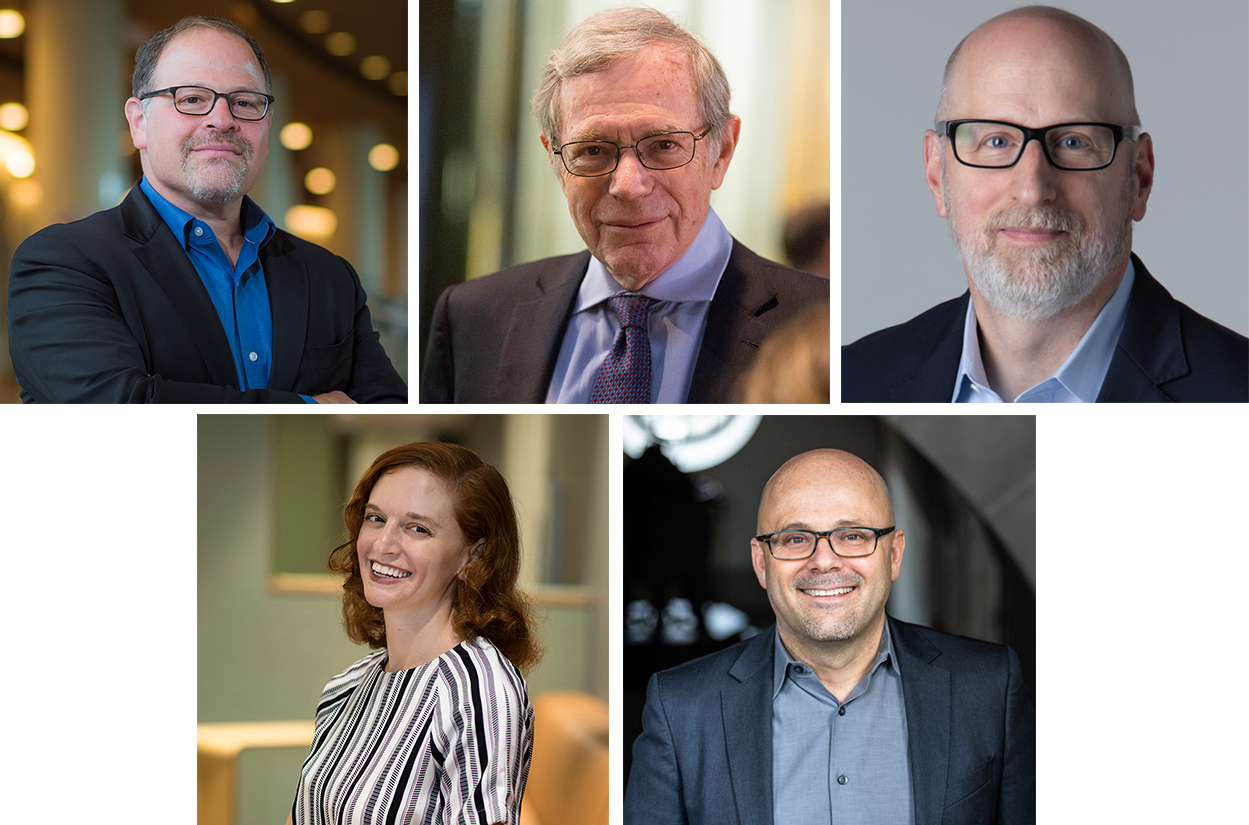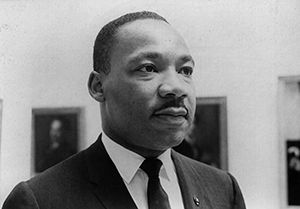Viewpoint Exchange: Marla Brettschneider on the Complexity of Jewish Identity
By Rebecca GoldfineFor the third talk in this semester's Viewpoint Exchange series, Marla Brettschneider explored how political processes in modern Europe shaped Jewish “co-constructions” that placed Jews outside what was considered normal.

Now in its second year, Viewpoint Exchange brings scholars and public figures to campus to “talk about contemporary issues and go a bit deeper than the headlines,” said organizer Benje Douglas, senior vice president for inclusion and diversity. The series, he added, enhances discussions already taking place in classrooms, clubs, and what he called the “Bowdoin public square.”
“Our goal is to enrich and expand the conversations students and faculty are already having by inviting thinkers who can push forward our collective understanding in new ways,” he said.
Brettschneider, a professor of political and feminist theory at the University of New Hampshire, is an expert in Jewish diversity politics. She has written several books, including Jewish Feminism and Intersectionality (2016), Jewcy: Jewish Queer Lesbian Feminisms for the Twenty-First Century (2024), and her most recent work, Revolutionary Legacies: Jewish Feminist Political Thinking with Jamaica Kincaid, Golda Meir, Hannah Arendt, Frida Kahlo, Gertrude Stein, and Emma Goldman.
At the outset of her Bowdoin talk, she explained she would be “exploring Jewish queer theory through the co-constructed frames of race, gender, sex, sexuality, class, and a tiny bit of colonialism.”
The “co” in the co-construction concept she returned to throughout the talk derives from both modern Christian frameworks of class, gender, sexuality, and race in the Western world, and from Jewish self-understandings within those systems. “So, due in large part to these differing constructions, Jews have historically been seen as queer in the modern Christian West,” she said, as in outside those ethnic, social, cultural, and economic frameworks.
Racial constructions
She began with race, noting that Northern European Jews—who make up most of the Jews in the United States but not worldwide—have long been “categorized outside the boundaries of whiteness created in Western racial taxonomies.”
“This remains a live issue globally and in the US,” she added.
As Europe moved into modernity and away from religious thinking, new racial categories—and modern nations—emerged and were codified into law. Within this framework, Jews were viewed as nonwhite, “racially classified as outside of the nations” and “racially other.”
Class constructions
They were also excluded from prevailing class hierarchies, which were built on norms of whiteness and elite expectations, like bloodline, noble birth, wealth and land ownership, or participation in the clergy, military, or professional guilds.
“Categorically, Jews were outside the framework of how class constructions in society operated,” she said. “They couldn't access the higher realms of society…due to a combination of the reality of the way Jews lived, and stereotypes and perceptions of Jewish people.”
Within Jewish communities, meanwhile, class, status, and prestige mostly derived from learnedness—particularly through the study of ancient texts in the yeshiva. This pursuit, however, excluded women, who were not permitted in houses of study. “That combination of status with learnedness,” Brettschneider said, “was also very much gendered.”
Gender constructions
While Jewish men spent their days reading, thinking, and discussing, women were left to support their families. “The wives of these elite men were businesspeople,” Brettschneider said. Because literacy in letters and numbers helped in these endeavors, Jewish women were often better educated than women in surrounding communities.
This reversal of traditional gender roles—women working in the public sphere and men remaining indoors—produced enduring stereotypes: Jewish men as studious, weak, and effeminate, and Jewish women as pushy, strong, and savvy. “These run counter to typical gendered class understandings, even today,” Brettschneider said.
From these intersecting constructions, Jews became “unintelligible” in European society. “You literally couldn’t understand them—they made no sense,” Brettschneider said. “By adding a gendered understanding of class, Jews were gendered as queer, not just race queer.”
Today's gender debates
Brettschneider then connected Jewish historical constructions of gender to current debates, including contemporary US policies that define gender in binary terms: male and female. Drawing on ancient Jewish texts that identify six to eight gender categories—including androgynos, tumtum, aylonit, and saris—she noted that for thousands of years, Judaism has acknowledged a more complex understanding of gender.
This, she suggested, carries potential legal implications for modern discussions around gender identity. She used an example about abortion to explain this. “Jewish law has generally favored the life of the woman or girl over the fetus,” she said, adding that recent rollbacks of reproductive protections have been challenged on religious freedom grounds. Likewise, Jewish tradition could provide a faith-based argument against legal claims recognizing only two genders.
By bringing such complex intersections into focus, Brettschneider’s talk exemplified the kind of intellectually challenging and nuanced dialogue that the Viewpoint Exchange seeks to foster at Bowdoin.
The next Viewpoint Exchange talk is November 4, when Ken Stern, director of the Bard Center for the Study of Hate, speaks on “Hate, Memory, Binary Thinking, and the Future of Democracy.” Stern's talk will be followed by a community dinner.


